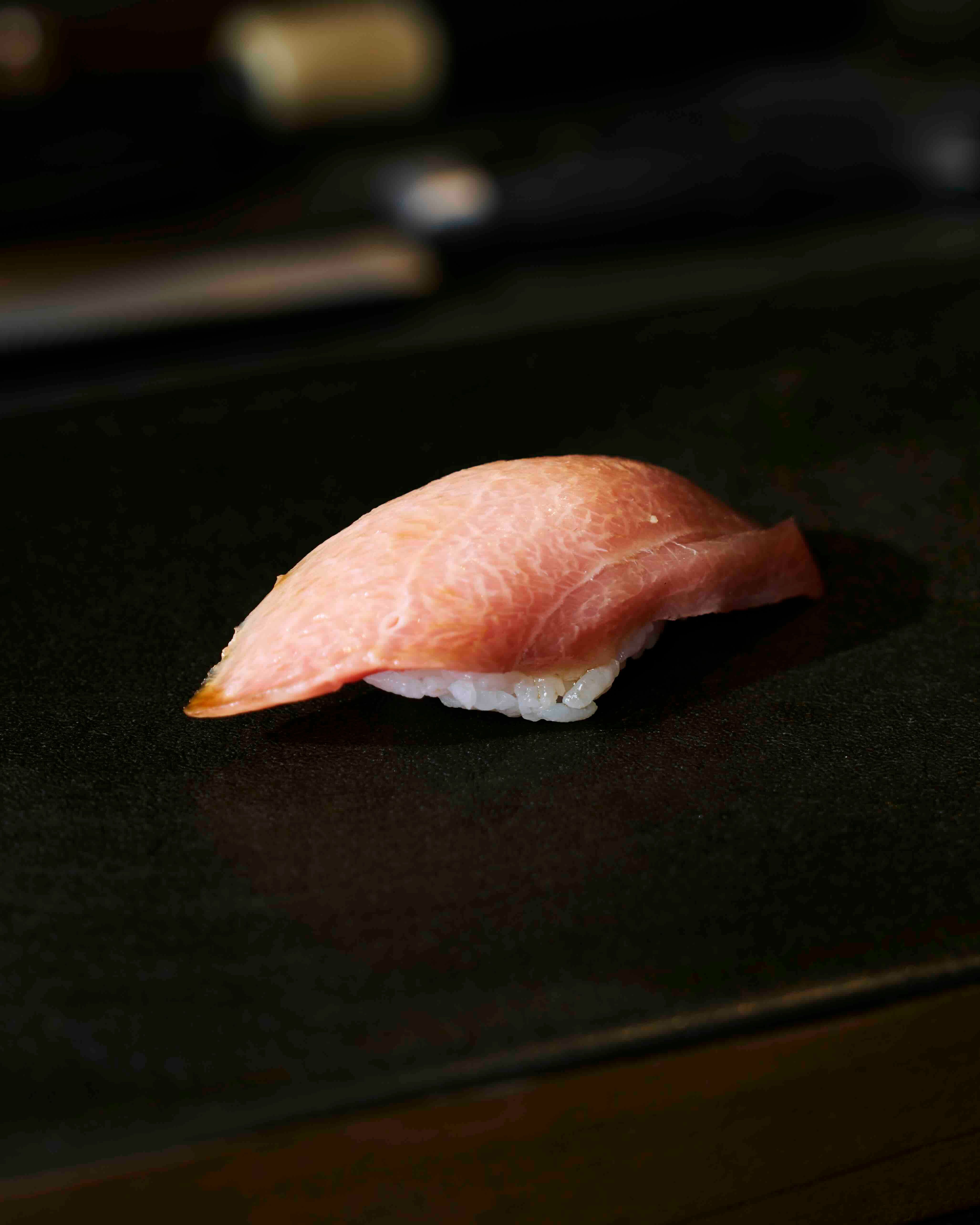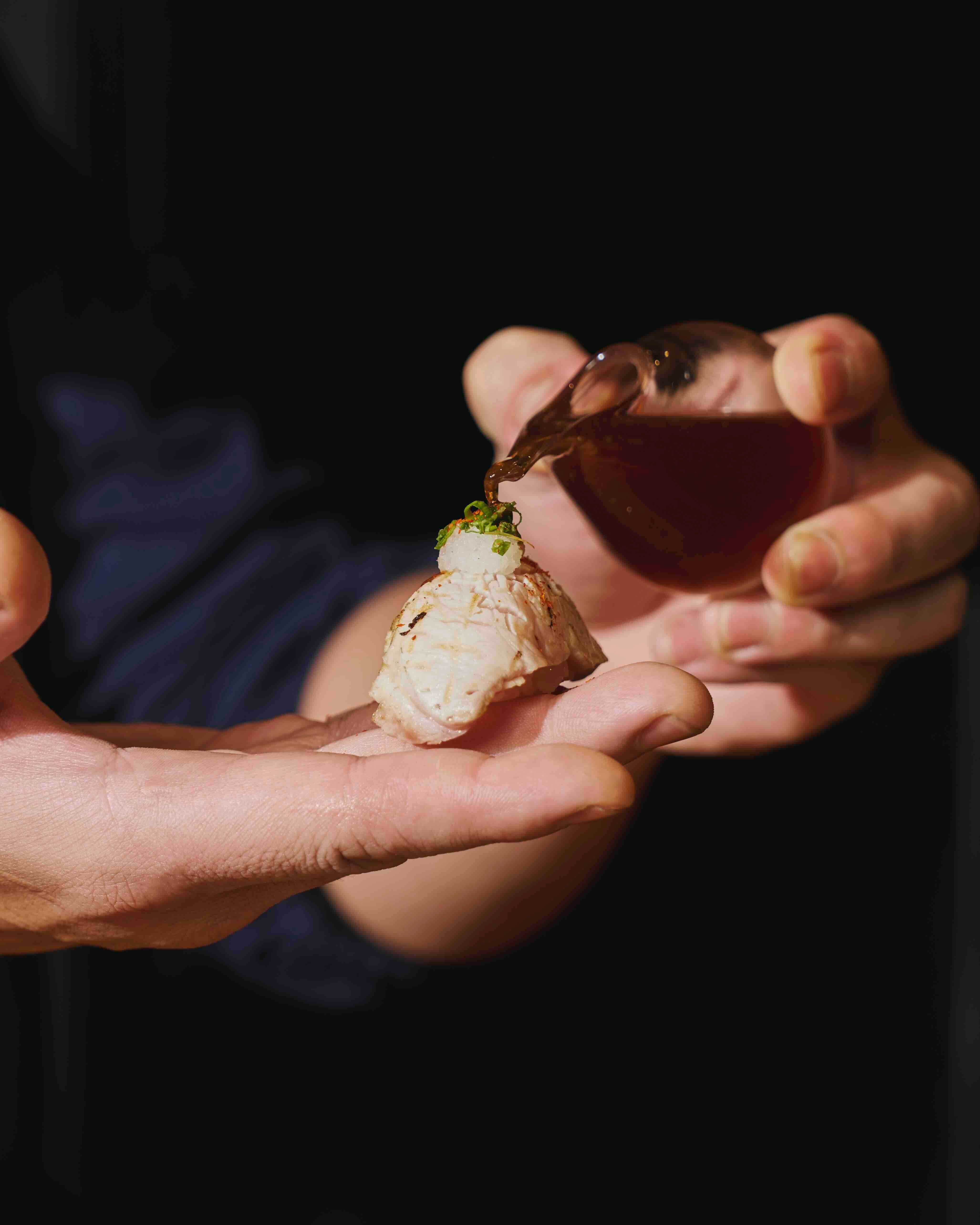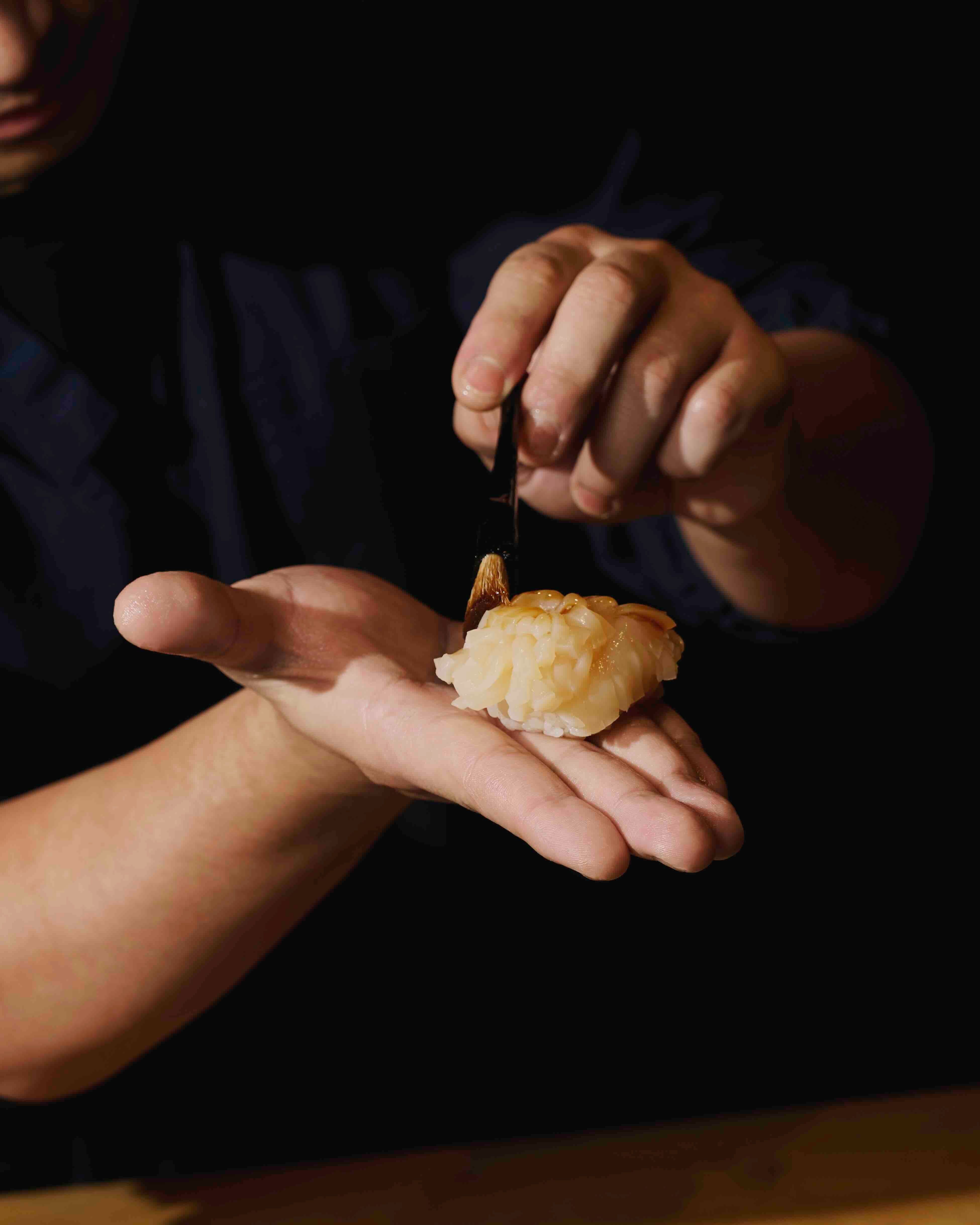At A Glance
- Images by Sonny Thakur
Each sushi evokes a lofty sensation on the palate in the way the Japanese are able to create impressions of perfection in a world where no perfection is possible, such as in their pursuit of kōgōshii, meaning heavenly.
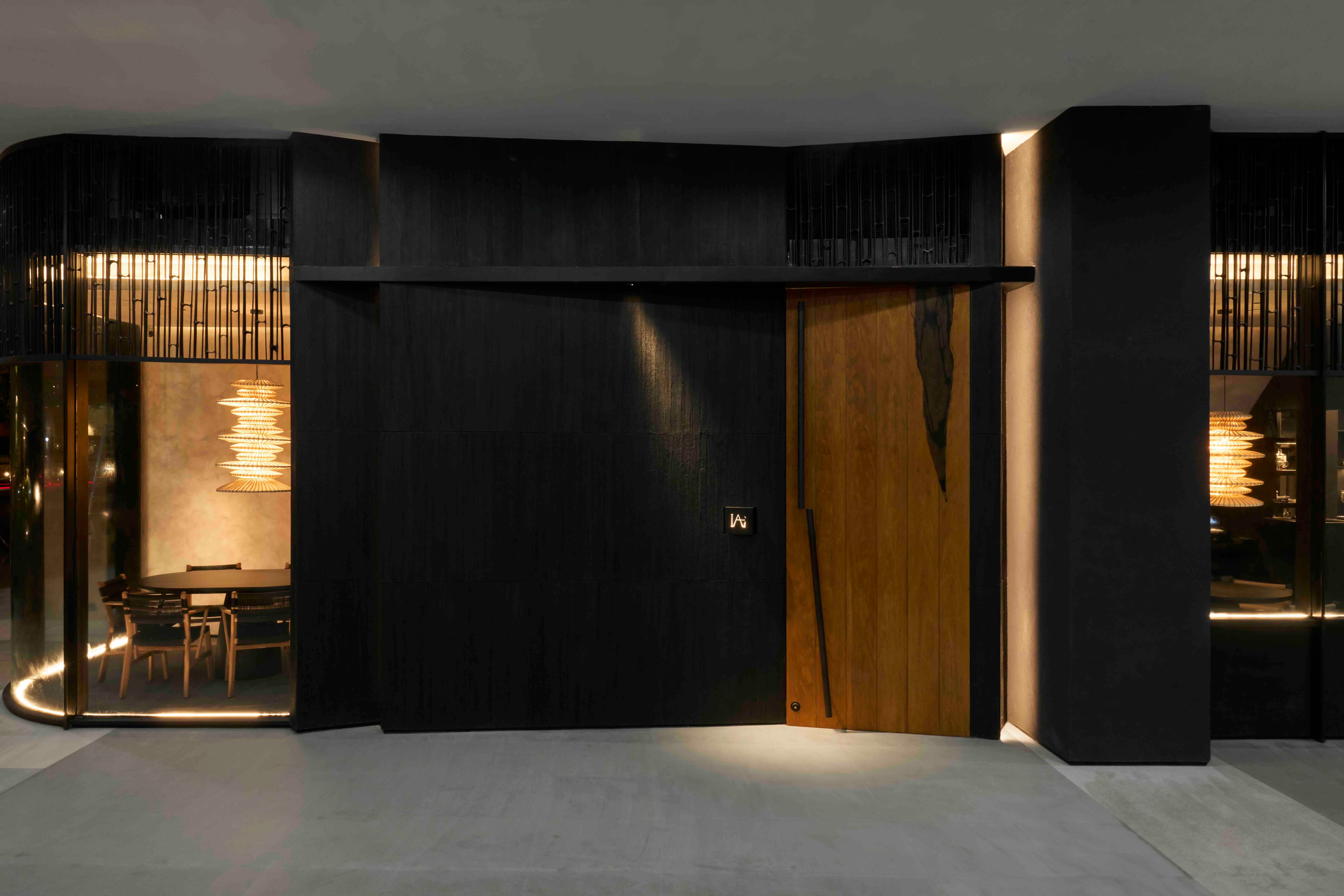
Snuggled on the ground floor of the high-rise residential project The Montane in the very happening north side of Bonifacio Global City in Taguig is the new reservation-only restaurant Iai, talk of the town and, having only recently soft-launched, already making a buzz among Manila’s foodies and its visitors. Across the wide 8th Avenue from the Grand Hyatt in BGC, as you make your way to the restaurant, you can see its chef, Bruce Ricketts through the glass walls, framed just so that, already, even as you walk through the statement doors, you have a glimpse of the omakase action behind the chef’s counter, possibly with the chef hunkered down molding sushi like a sculpture.

Sublime is how it strikes me, the comeback of Bruce Ricketts just a few years after he put his famed Mecha Uma chapter behind him. Iai Manila is a venture all his own, together with his wife Jae De Veyra Pickrell and it’s a work I would say of inspiration, precision, wonder, sensibility, and art, a morii, in a Japanese manner of speaking, captured in glass and charred wood taken from banana tree trunks.
The very name, Iai, invites the diner to some form of contemplation, an abbreviation of iaidō, a Japanese martial art concerned mostly in a high state of awareness of surrounding, preparation, keenness, and grace, such as in drawing the sword from its scabbard and placing it back in, even in shaking blood off the blade.
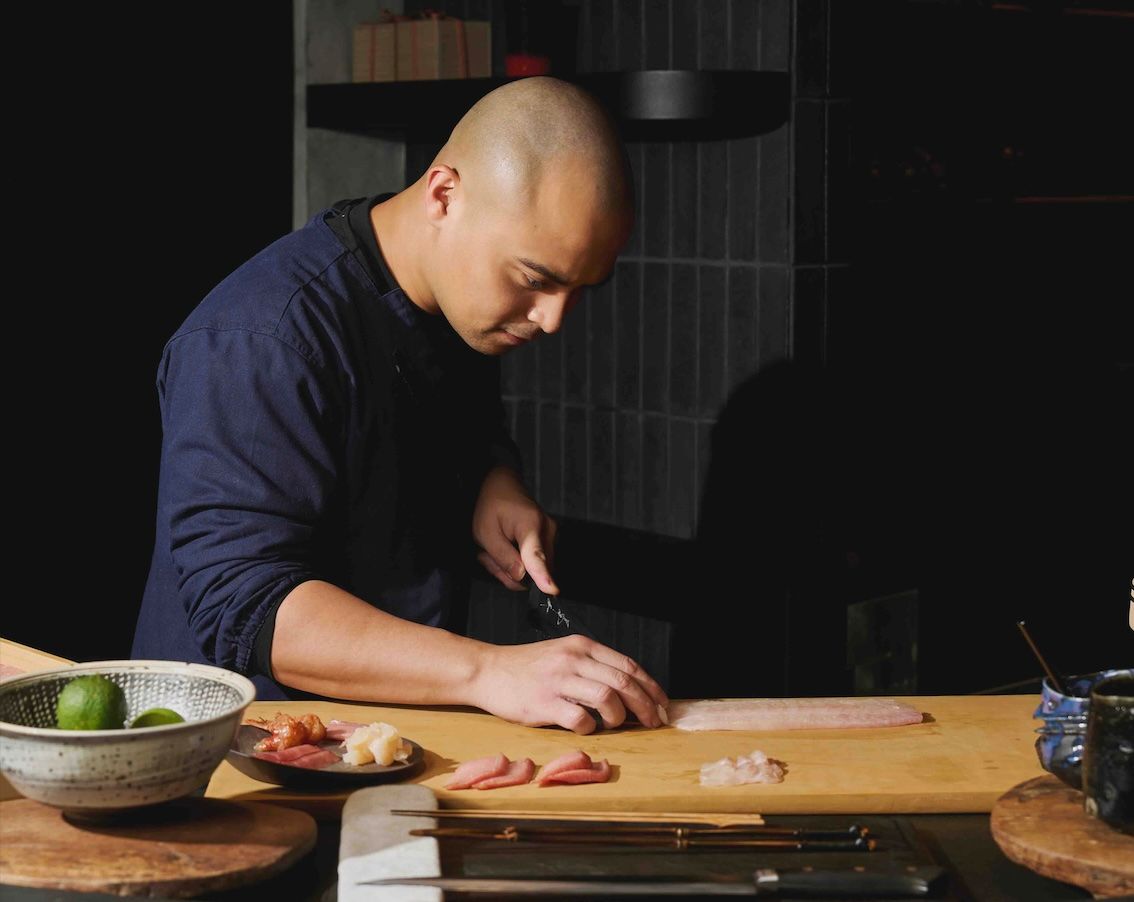
What the menu offers, the centerpiece of which is the nigiri course of five to seven pieces of sushi, is true to the principles of iaidō—seasonal, spontaneous in terms of preparation but featuring a spontaneity made only possible by mastery and lifelong discipline, exquisite yet not fussy, and made in pursuit of the extraordinary. This time around, following a life changing trip he and Jae embarked on to Basilan, Bruce is, whenever possible, exploring and showcasing the nuances, the pure taste, of Philippine-caught fish, slaughtered in the style of ikejime, the Japan-originated technique of killing fish directly through its hindbrain, just above the eyes, to prevent it from releasing stress hormones that compromise the taste of its meat.
Sushi is simple, just fresh fish and seasoned rice, yet it can be so sublime, as it is at Iai by deft of Bruce’s hand and his lineage in martial arts and as it is presented in a setting Jae and her team of interior designers at Studio Ong so painstakingly built on the essence of wabi, the Japanese phrase for the less-is-more aesthetic, intimate and cozy yet spacious and breathing an atmosphere of quiet and serenity, combining Filipino and Japanese in a blur of refinement understood only by the eye, the ear, the nose, the skin, and, ultimately, the palate, a dreamscape poetically dim lit up by pendant lamps in the shape of pagodas hung upside down as much as they are in the shape of salakot, a traditional headgear first recorded in the account on the Ferdinand Magellan / Juan Sebastián Elcano circumnavigation (1519-1522) by Italian scholar Antonio Pigafetta, who described it as “a large hat of palm leaves in the manner of parasol” worn by the queen.
Whether hirame, a flatfish known in Tagalog as isdang palad, or smoked toro, whether saba flavored with pickled myoga and made stickier with kelp, or gambaroja marinated in cognac and soy, whether chutoro or Hamachi, sushi-grade yellowtail, or shima aji, striped jackfish, each sushi evokes a lofty sensation on the palate as well as on the mind in the way the Japanese are able to create impressions of perfection in a world where no perfection is possible, such as in their pursuit of kōgōshii, meaning heavenly.
The same is true of the otsumami or the six to eight pre-nigiri snacks, of which my favorites were the Iwashi Pan, featuring the cured sardines on top of Iai’s housemade milk bread with a pickled bell pepper, the Oyster Croustade featuring oysters from Tayabas, Batangas, and the foie gras and rhubarb on black sesame crisps. There was also chawanmushi with abalone, Hokkaido sea urchin, and caviar, which was served alongside the Tausug tiyula itum-inspired taro puff of octopus and bell pepper in coconut milk, all drenched in squid ink, and the Clam Ceviche and Squash Tart featuring local clams.


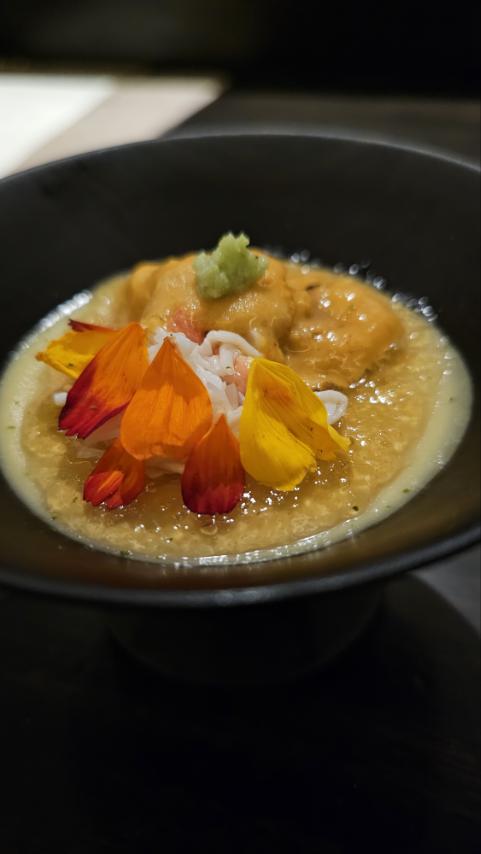

Following the snacks on the omakase menu is a fish course, Bruce’s masterful interpretation of the very tasty samegarei or roughscale flounder and red mullet from Basilan, just as following the nigiri, comprising the main course, is slow-roasted lamb, carrots, ume furikake, celery spuma, and guava and beet sauce.
My choice of poison, the kusuri, made of Koji sake, Laphroaig, perilla leaf, ginger, and yuzu, proved just as thoughtful, as mood-enhancing as many of the elements at Iai, edible or not, decorative or practical, everything from the lighting fixtures to the stemware and the flatware, the two-toned chopsticks that emit a smoked bamboo scent, including the brass clips that hold the drinks list together, making a meal at Iai kamigamishi or kami-like, kami, being in essence the god of perfection in Japanese culture, the very “extra” in extraordinary.
Ask me what I think of Iai and I will answer in a word—sublime.
Iai is at G/F The Montane, 8th Avenue corner 35th Street, BGC, Taguig. Walk-ins are not allowed. Book your visit at iaimanila.com/reservations.
